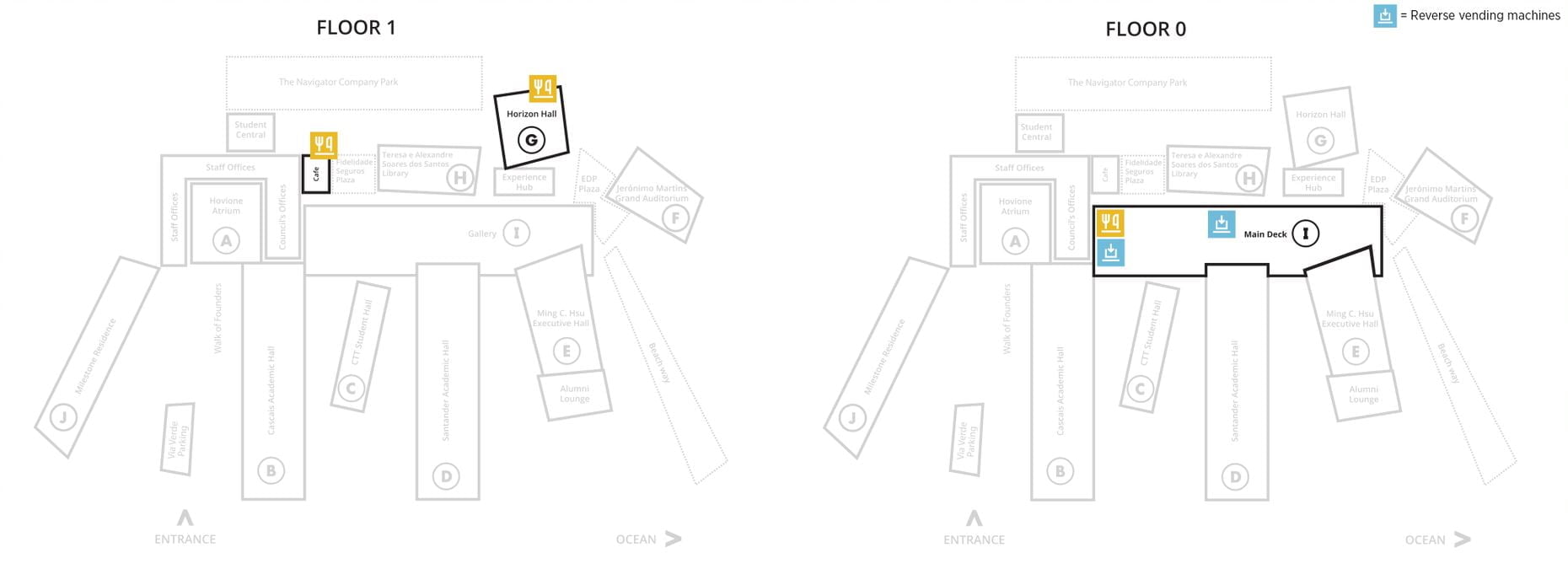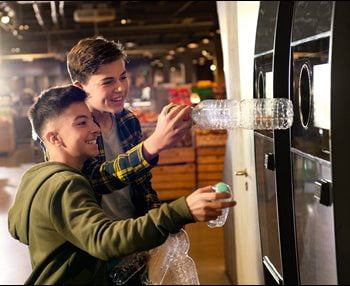Nova SBE and TOMRA deposit return recycling scheme
Get in the loop! Global reverse vending leader TOMRA and Nova School of Business & Economics have jointly put in place a “deposit return system” for greater on-campus recycling and sustainability. Nova SBE and TOMRA are frontrunners of the national deposit return system the Portuguese government will launch in 2022.
How does it work?
Simply pay a €0.15 deposit when you purchase an eligible drink container (cans and glass/plastic bottles) at participating campus stores and restaurants, including Pingo Doce & Go, and get your deposit refunded back by returning your empty container to the “reverse vending machines” located in the food court.

How do I get back my refund?
You can get your deposit refund paid out in two ways:
• Receive it electronically via PayPal
• Donate it digitally, to the Community Center for the Parish of Carcavelos.
To set up to receive your deposit via PayPal, download the myTOMRA app, click “Register” to fill in your details, and connect myTOMRA to your PayPal account (or create a new PayPal account).
How do I use the reverse vending machine?
At the reverse vending machine, simply follow these steps:

Take your empty containers to the food court in the Main Deck, and get in the loop!

The deposit return system aims to motivate all students, staff, faculty and guests at Nova SBE to return their bottles and cans for recycling! This helps to:
• Reduce landfill, combat plastic litter and pollution and land at sea
• Better reuse more materials and reduce reliance on raw materials to produce new drink containers
• Raise awareness of deposit return systems and reverse vending both on campus and across Portugal
• Contribute to Nova sustainability initiatives as an environmentally-conscious campus
What are deposit return systems?
Deposit return systems add a small deposit to the price of a drink, which is refunded to you when you return your empty drink container for recycling. Think of it as buying the drink and borrowing the container! By incentivizing the recycling of containers that might otherwise be littered or end up in landfills, these programs achieve up to 40% higher collection rates than other methods. Deposit return systems run in over 40 regions around the globe. Find out more about deposit return systems.
How does a reverse vending machine work?
To make returning containers more convenient, deposit return systems often use “reverse vending machines” – an automated way to collect/sort containers and give recyclers back their deposits. This is what makes it a “reverse” vending machine: instead of putting in money and getting a bottle out, you put a bottle in and get out a monetary value. Find out more about reverse vending machines.
What is Clean Loop Recycling?
Reverse vending also avoids bottles and cans being contaminated by other kinds of waste. That way, valuable materials like aluminum, plastic, and glass stay clean enough to be recycled into new containers again and again – in a closed loop called Clean Loop Recycling. This means fewer resources leave the loop as waste, and fewer raw materials need to be mined or extracted to enter the loop. Get in the loop by recycling your containers in a closed loop! Find out more about Clean Loop Recycling.
Who is TOMRA?
Founded in 1972, TOMRA’s reverse vending machines capture 40 billion used drink containers every year toward recycling in a closed loop. This ensures fewer containers end up in our streets, oceans and landfills. TOMRA has more than 84,000 installations across more than 60 markets, making recycling easy for the industry, system owners, retailers and consumers to contribute to a more sustainable planet. Visit www.tomra.com, and follow us on Facebook, Twitter, Instagram and LinkedIn.